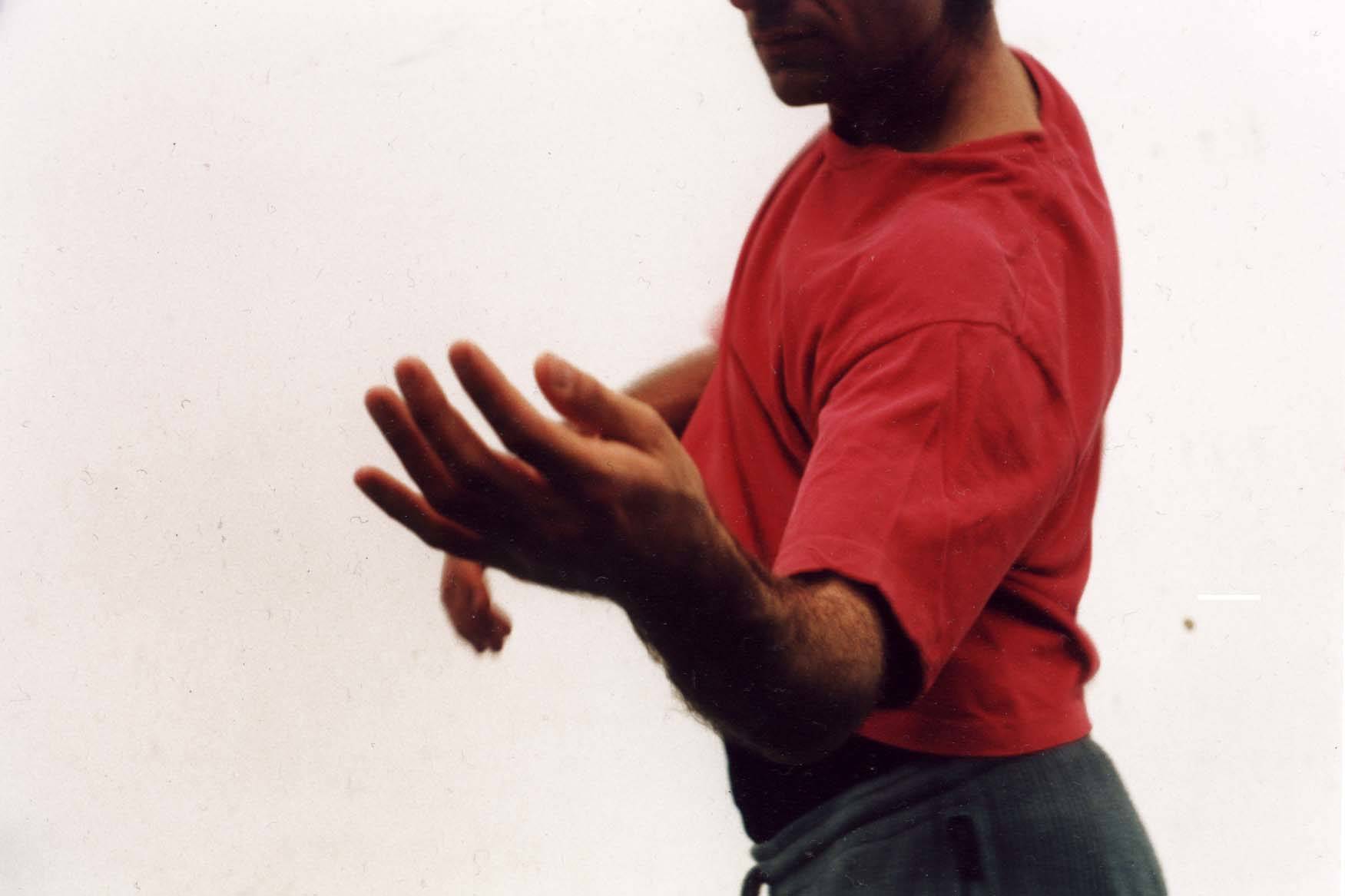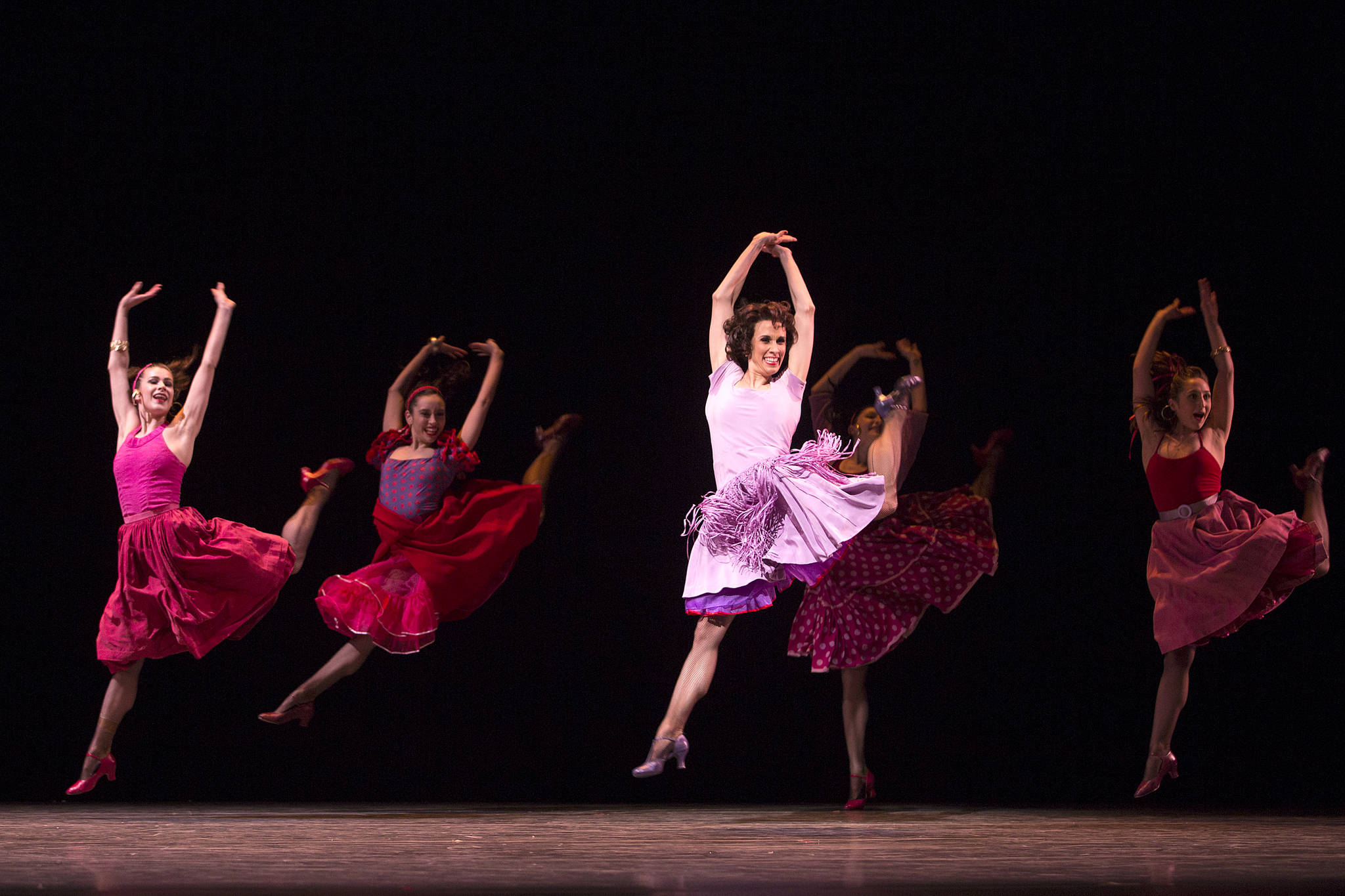IN THE FIRST BATMAN movie, Jack Nicholson’s Joker asks covetously of his nemesis, “Where does he get such wonderful toys?” The members of Lelavision make theirs and then play on them with gusto. Composer and instrument-inventor Ela Lamblin often looks more like a child on an eccentric jungle gym than a traditional musician. The instruments he devises can fill a room, and playing them is an intensely kinetic activity, so that the actual choreography by his partner, Leah Mann, is as much about making sound as it is dancing.
Lelavision’s work sits between traditional categories. It’s not really theater, though it has a sense of narrative and character; not just music, since you’d miss a great deal of the fun if you closed your eyes; not really mime or straight dance. Lamblin and Mann, who live in Seattle and have been collaborating for 10 years, call their work “physical music.” As they dance over, through, under, and around a collection of strings, gongs, shakers, and other, more mysterious objects, they hum, clang and whisper, like kids in a fabulous toy store.
In their current work, Rhythm of the Landscape (which they’ll perform Friday, Jan. 17 through Sunday, Jan. 19 at On the Boards), the toys range from minute to giant, including a set of tuned strings stretched from ceiling to floor, weighted down with rocks and played by rubbing with gloved hands. There are gongs hanging in midair reached by bungee jumping; a full set of drums worn on the body (with tiny little drums over the kneecaps); and a spinning volcano-shaped metal instrument big enough to crawl into, set with strings on the outside like a harp. Lamblin and Mann, along with colleague Sheli Potmesil, attack all of this with a spirit of innocence, as if discovering it new with each performance. The underlying theme of Rhythm is supposed to be the cyclic quality of nature and of music, but in a studio performance last autumn, this came in second to a kind of overall infectious glee the performers take in their work.
The choreography now is “a layered process,” says Mann. “One layer is Ela making the instrument, then how we play it, on it, and around it. Then we’re working on the dance section, making it fuller bodied, more gestural, more complex. Playing comes first, then shaping movement.”
That movement, a series of verbs strung together on the back of the music, at first seems almost utilitarian, doing whatever is needed to produce the sound. As you watch, though, you see how the quality of the tone extends into the quality of the gesture—long delicate strokes on rosined strings contrasting with a forceful push against the floor as someone rockets up toward the ceiling to bash on a gong.
Though the work is difficult to categorize, it’s been extremely popular with audiences. With up to 1,500 pounds of metal, rocks, and “stuff,” Lelavision has toured extensively, three times to the Fringe Festival in Edinburgh, throughout the U.S., and this spring to Japan and Australia. Ironically enough, they’re far better know outside of Seattle than they are at home, where they mostly perform in their studio, with the audience practically sitting on top of the dancers. This weekend’s OTB show offers a chance to take in a fuller view.









